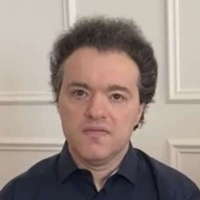 DISCUSSION: What is a work? John Dante Prevedini leads a discussion about The performing artist as co-creator, including contributions from Halida Dinova, Yekaterina Lebedeva, Béla Hartmann, David Arditti and Stephen Francis Vasta.
DISCUSSION: What is a work? John Dante Prevedini leads a discussion about The performing artist as co-creator, including contributions from Halida Dinova, Yekaterina Lebedeva, Béla Hartmann, David Arditti and Stephen Francis Vasta.
An Outstanding Concert
RON BIERMAN listens to chamber music by Haydn, Ravel, Mendelssohn and Dvořák from Jean-Yves Thibaudet, Lisa Batiashvili and Gautier Capuçon
Any superstitious concern that a Friday the thirteenth concert might turn out badly had disappeared by the time the audience rose to demand an encore from the all-star trio of pianist Jean-Yves Thibaudet, violinist Lisa Batiashvili and cellist Gautier Capuçon. It had been an exceptional chamber music performance. Given the musicians' resumés you might think that was a sure thing. Most in the audience probably did, and the concert sold out early. But the large egos of some major artists who solo in front of the world's greatest orchestras can be difficult to throttle back for the cooperation needed in a small chamber group. There was little doubt that each of these three artists would play at a high level of artistry, less certainty they would be listening to each other to ensure the beauty of the ensemble.

Lisa Batiashvili. Photo © André Josselin
The three works on the program ran the gamut of emotions while encapsulating three centuries of music. Haydn completed the forty-fourth of his forty-five piano trios near the end of the eighteenth century. It uses the forms and harmonic conventions of the Classical era to enrich easily appreciated melodies. The first movement is a cheerful delight, the second a moment of somber reflection. The finale returns to Haydn's more frequent buoyant optimism.

Gautier Capuçon
Haydn described his piano trios as sonatas for piano with violin and cello accompaniment, and Thibaudet demonstrated appropriately forceful leadership along with admirable technique. His crystalline bubbling liquid runs were a special delight.

Jean-Yves Thibaudet. Photo © 2021 Elisabeth Caren
It became more evident that the three musicians were equal partners, and indeed listening to each other, as they gave a stunning performance of the beautiful melodies, lush textures and more diverse emotions of Ravel's only piano trio. Tempos and dynamics maximized the impact of one of the most beautiful and effective of the composer's compositions. His twentieth century work was a perfect vehicle for the performers' ravishing string sounds and the interplay of three superb musicians.
Mendelssohn's second piano trio, written late in the nineteenth century, was the last on the program. The performance offered more of the same luxurious tone and precise articulation that went before. Mendelssohn consistently demonstrates some of the best elements of the Romantic era. Drama, warm melodies, stormy interludes and harmonies unfamiliar to the Classical era are highlights of the first two movements. The third has the energetic skittering strings of the composer's memorable Midsummer Night's Dream Overture and Italian Symphony. The meaty texture of the final movement, especially in a performance of this strength, seems to include two or three extra instruments, and its ending had many leaping from their seats to applaud.
After three curtain calls, the trio relented and returned for a delicious nightcap, the final movement of Dvořák's 'Dumky' Piano Trio. Its infectious Slavic melodies and rhythms completed an outstanding concert.
Copyright © 27 October 2023
Ron Bierman,
San Diego, USA




